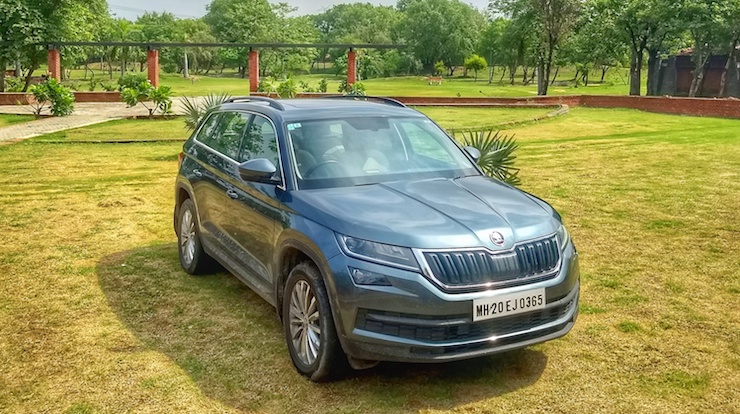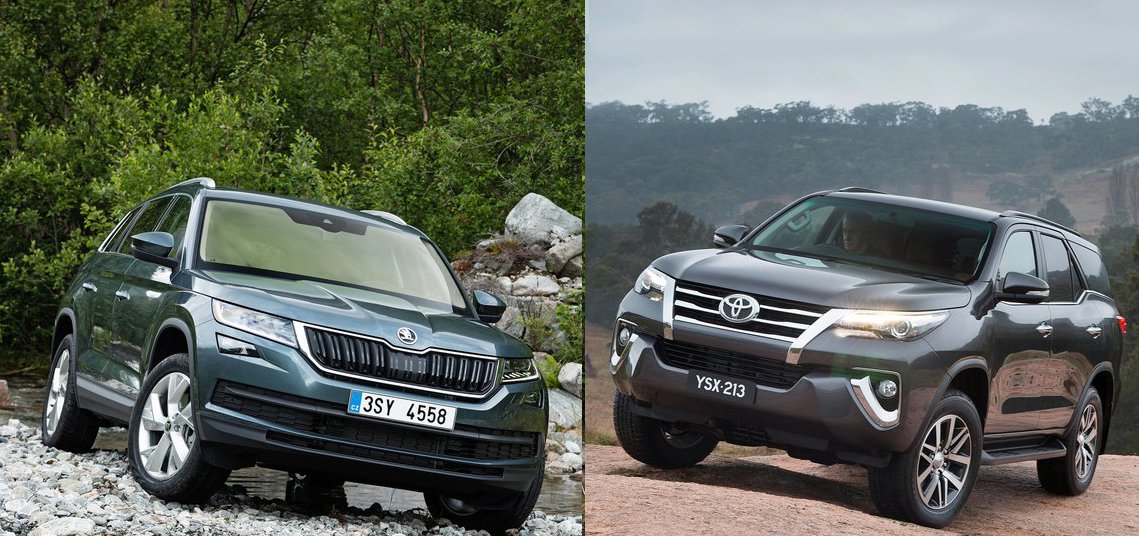
SUVs are the flavour of the season, no two ways about it. But surprisingly, this is not limited to mass-appeal segments like compact SUVs or 7-seater family options in the Rs 15-20 lakh bracket. Even the premium space is witnessing newer options and the latest entry in the Rs 30-40 lakh segment comes from Skoda. It’s their first try at a 7-seater full sized SUV and they seem to have got it right. Why? Read on…
The Kodiaq looks smart. If you want muscles and bulk, look elsewhere. This one wears the corporate suit very well and yet has style – you can’t take it away from Skoda for designing the Kodiaq keeping in mind their typical customer base. A proud Skoda owner upgrading from the smaller Octavia or even the Rapid will instantly fall in love with the Kodiaq. The front is unmistakably Skoda, with strong cues taken from the Superb. The headlamps are narrow and sharp and I personally love the way those DRLs look. They also double up as indicators, dropping a few jaws in the process.
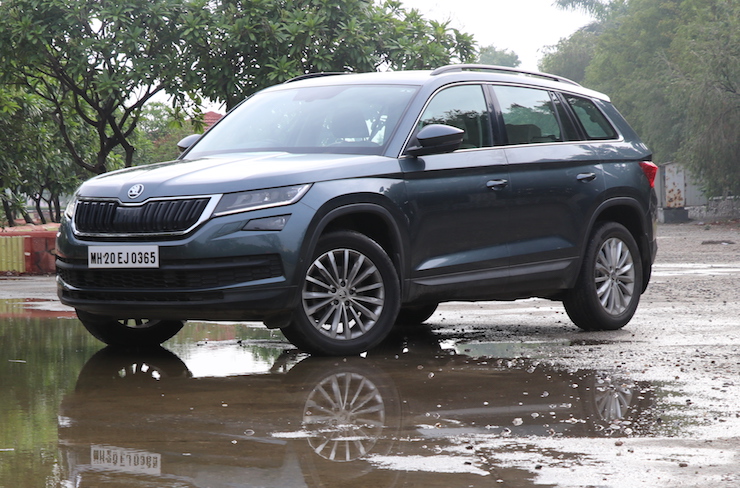
The side profile makes the Kodiaq look massive. But it isn’t. The overall length is actually less than that of the cheaper Superb. This also gets Czech maker’s trademark styling line that slices the boot-lid into two, and of course the squared-off taillights with C shaped LEDs. The Kodiaq isn’t as long as its bigger peers like the Endeavour and Fortuner but is wider, which means it offers oodles of space on the inside.
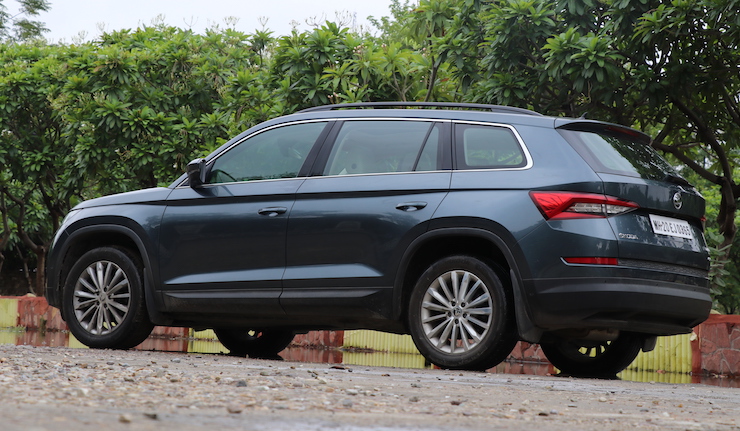
As compared to the other large SUVs in the price band, you do not need to climb into the cabin and this is where things start looking good for this Czech offering. The cabin design is not a huge departure from what we have seen on Skoda offerings – ‘why reinvent the wheel’ works here. I particularly like the vertical air vents and generous dose of glossy black plastic on the dash and doors with an embossed pattern that makes it look like real wood – adds to the premium appeal.
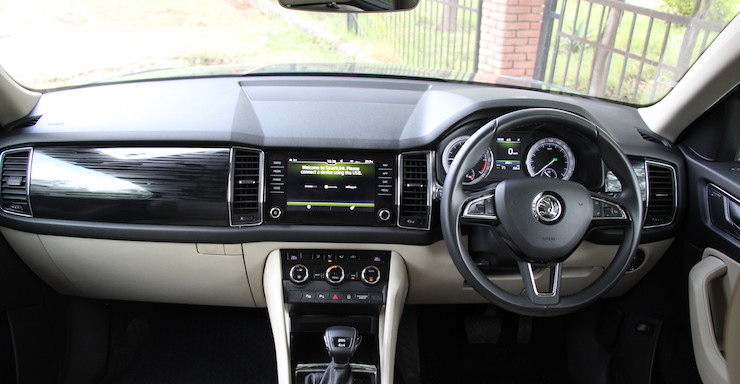
The dark-n-light color theme works well and as the Kodiaq is sold only in one trim level in India, Skoda made sure it came with all the bells and whistles. And I am just not talking about the massive panoramic sunroof or powered front seats, but more tech in the form of a high-end Canton audio system, 3-zone climate control, 8” touch screen with multi-link and so on. That said, why did Skoda leave out cooled seats and a sunglass holder do leave me surprised. Also, the steering and instrumentation console are identical to that of the Octavia and could have done with a slight makeover given that the Kodiaq sells for double the price.
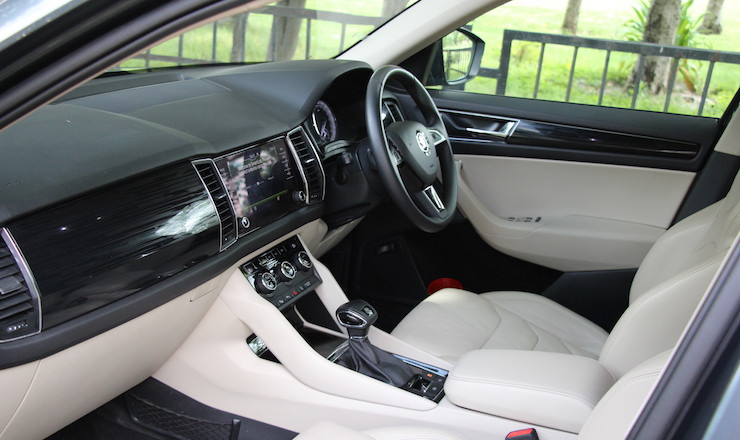
If it ain’t spacious, it ain’t a Skoda. The Kodiaq delivers on this account in the first two rows easily. Thanks to all that width and a large glass area, the cabin feels very roomy and XXXL sized. You even get memory functions for both the seats and outside mirrors which make life easier if multiple people in the family are going to drive this SUV. Ergonomically, the Kodiaq ticks all the right boxes and this is one SUV that feels at home for even regular car drivers. The seats themselves are fairly large and you don’t have to stretch yourself for using most controls and spaces inside. The central arm-rest opens up to reveal a lot of space and has more than ample adjustment in terms of the slide length along with an adjustable height function – this makes it easier to use for shorter drivers too (as they will drive with the seat pushed forward).
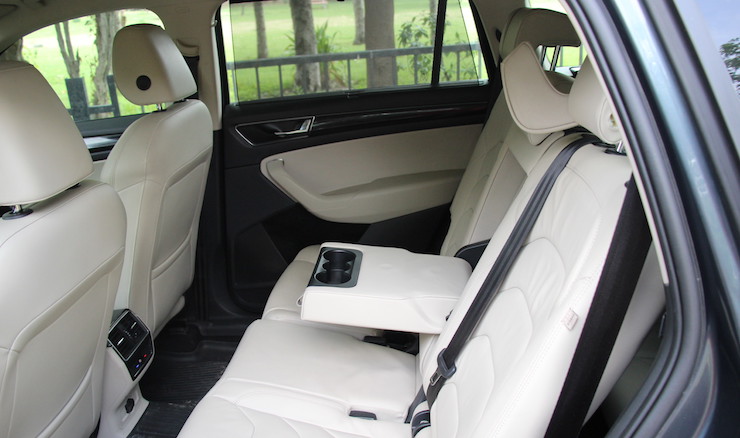
The 2nd row, like the seats up front, is also easy to access, thanks to a lower height and doors that open very wide. So if you will be traveling a lot with your parents and kids, the Kodiaq makes for a better buy. And once seated here, the passengers will be happy. It’s not just to do with the features like manual sun blinds, the massive sunroof or multiple adjustments for the seat, but the way the cabin feels – airy and large. You can easily seat three here but the central tunnel is quite high which will intrude into the privacy of the middle passenger. That said, the seats offer a slide option and can be reclined back for added comfort.
Access to the last row is similar to that of the rivals – it does take some effort and there is a reason why we call these SUVs 5+2 and not proper 7-seaters. Space at the back is not good for a large adult though kids will be happy given their own little private world here.
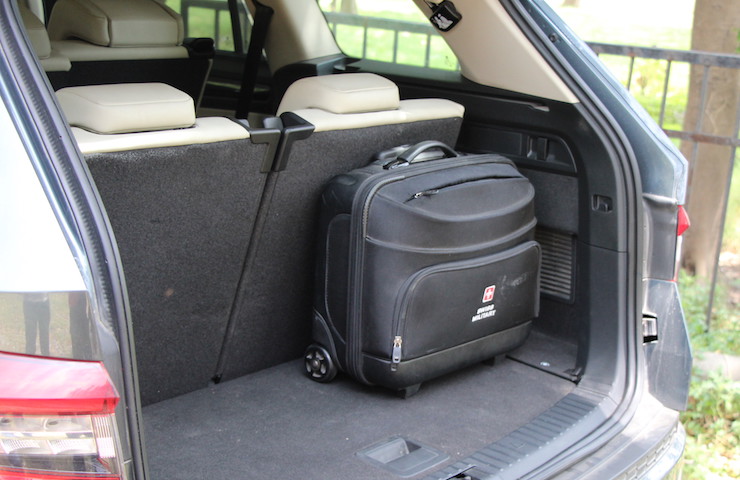
Boot space, even with all the three rows in place, is impressive. You can easily slot in three overnight strolleys and yet will have space for a few soft bags. This improves massively if you flip the third row seats. Talking of which, this gets me to the few clever touches here – the tail-gate gives you hands free access which means with the key fob in your pocket, all you need to do is swing a leg under the tail gate and it will pop open. Next are the clever umbrella holders in the front two doors with drain holes, paint protectors in all four doors and a power nap package for the side two seats in the 2nd row – these pop out from the side of the head rest and make sure you sleep peacefully on the move. Finally, the boot has a portable and re-chargeable LED torch for your camping fantasies.
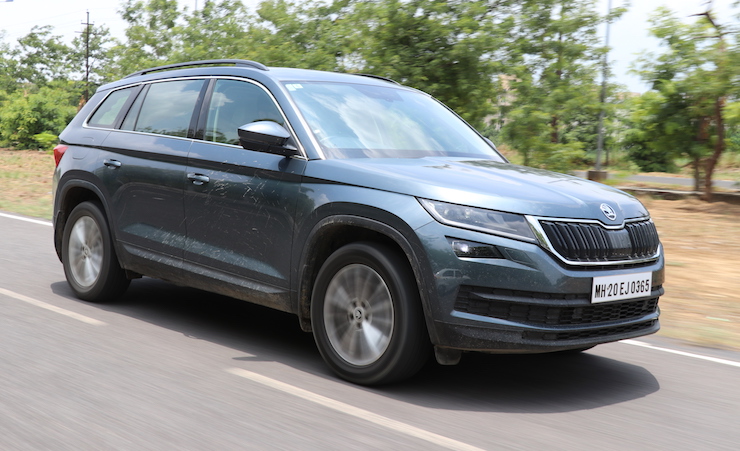
The Kodiaq comes with the same 2.0-litre TDI engine that powers a dozen cars of the Volkswagen family. These include the Audi A3/A4/Q3, Volkswagen Passat/Tiguan and Skoda Octavia/Superb, to name a few. It is good for 150 bhp of power and 340nm of torque and while these figures may seem average, let me bring out a fact. The Kodiaq is based on the versatile and light-weight MQB platform which makes it a good 200-300 kgs lighter than bigger rivals. Lesser the weight, better the performance and efficiency. The engine is paired to a 7-speed DSG gearbox – this is the same DQ500 gearbox that we see on the Tiguan. So how does it drive?
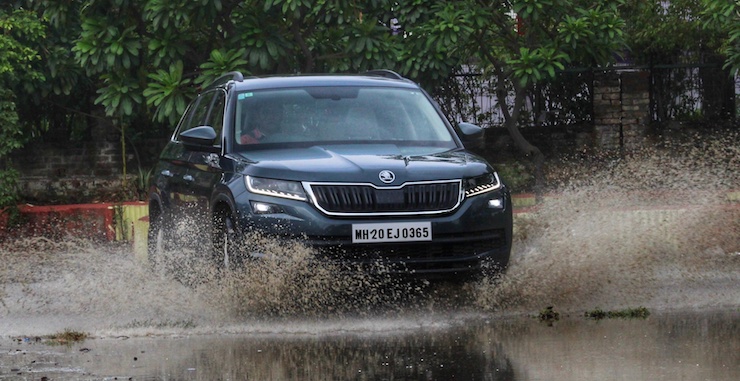
From a driver’s perspective, the Kodiaq sheds its size the moment you take off from parking speeds. The engine, as expected, has oodles of torque low down in the rev range and the system is geared towards extracting the best economy by default. Don’t get me wrong here, with the right foot down, the gearbox drops a few gears instantly and though you do not get pushed back into the seat, the gain in momentum is fairly quick. Of course you can flick the gear-lever into S or then flick it to the left for tip-tronic mode. Not yet satisfied? This one also lets you take charge via the paddle shifters.
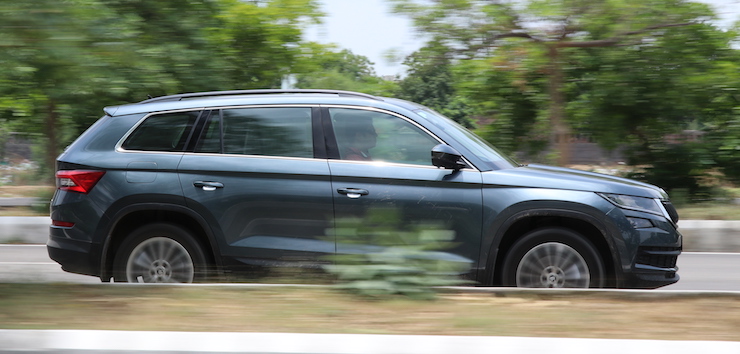
This is also the first Skoda to come with driving modes. There are five modes, with four being pre-defined : Normal, Eco, Sport and Snow. Eco is best when being chauffeured around and you don’t care about moving rapidly in traffic. This also offers the coasting function when you lift off the accelerator pedal, disengaging the transmission from the engine, helping bump up efficiency even more. For reference, a 75 min drive from office to work [38 km] allowed me to extract over 14 kmpl using the Eco mode. Not bad by any means.
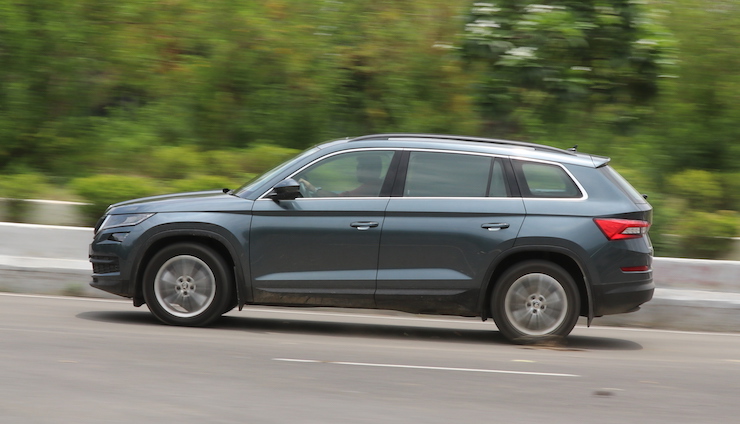
The Sport mode works as expected. The gears hold on till a higher engine speed and downshift early as well, the steering weighs up and throttle response is sharper. Want your share of grinning moments on weekends? Pick this one up. The Snow mode is best used for tricky situations wherein the accelerator sensitivity is reduced and the S mode of the gearbox disabled. The off-road mode is currently missing from the Indian version and that gets me to the AWD set-up of the Kodiaq. It’s an on-demand AWD and in normal driving conditions, power is sent to the front two wheels. All the four wheels are monitored at all times and whenever a loss of traction is detected, the system automatically transfers power to the wheels with the best traction.
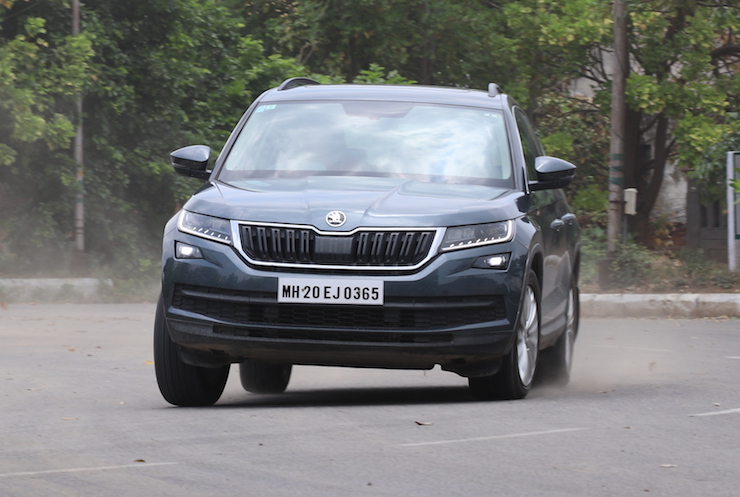
Based on the MQB platform, the Kodiaq’s steering is largely light and yet precise. Of course being a large vehicle, you can’t expect it to be very sharp and ‘connected’ and for most drivers and owners, it does the job quite well. The monocoque construction also makes it more car-like to drive and as far as you don’t want that ego-massaging towering view of the road ahead, the drive experience of the Kodiaq is excellent. Push the Kodiaq around a few corners and it responds well, thanks to its lower centre of gravity and lower weight – no squeaking from the tyres, no drama – just a hint of body roll and that’s about it. The Kodiaq runs on high performance Hankook Ventus S1 Evo2 tyres which are known to provide excellent grip levels, especially in the wet. However one thing that will not go down well with the Kodiaq owners is the massive turning radius of 6.1m, among the highest we have seen on any Indian car.
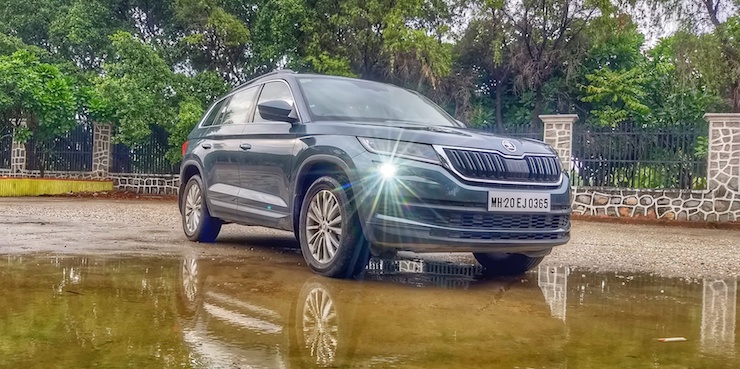
Last but not the least is the safety factor. As you must have known by now, the Kodiaq comes in only one fully loaded trim that gets as many as 9 airbags, MBA or mechanical brake assist, HBA or hydraulic brake assist, MKB or multi collision brake, ASR or anti slip regulation, EDS or electronic differential lock and ESC or electronic stability control, among others. Of course, you also get hands free parking for those really tight spaces.
At Rs 34.84 lakh ex-showroom Delhi, the Kodiaq is more expensive than the entry level versions of the BMW X1, Audi Q3 and Mercedes-Benz GLA and high-end trims of both the Ford Endeavour and the Toyota Fortuner. Yes, it’s on the expensive side but offers more seats than its German rivals and offers an easier driving experience than its 7-seat bulkier competitors. This is the USP of the Kodiaq and the reason why it’s outselling the cheaper Superb in India every month.
So if you are in the market looking at a very comfortable 5+2 premium SUV that is feature loaded and can be driven by your better half as well, the Kodiaq fits in like a glove. Do give this one a serious thought.
